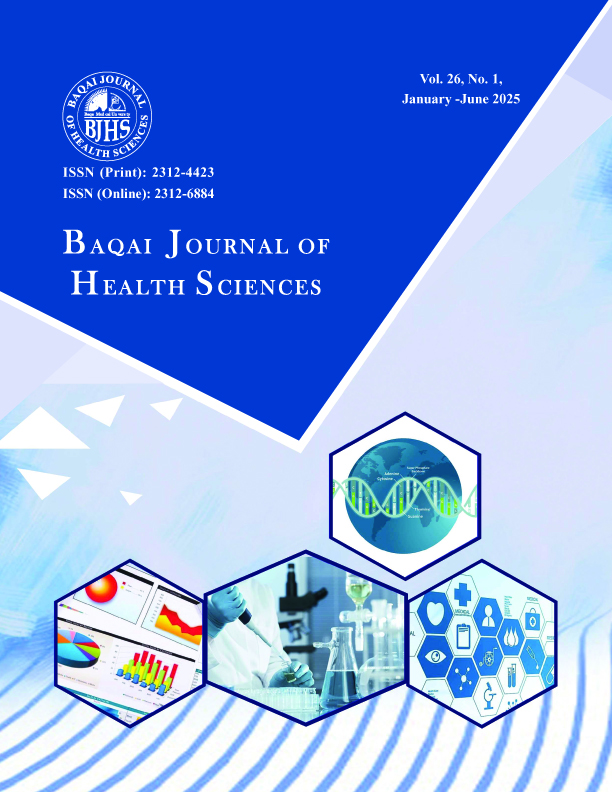IMPACT OF MODE OF DELIVERY ON MENSTRUAL HYGIENE IN POSTPARTUM PERIOD
DOI:
https://doi.org/10.63735/baqa.v26i1.22-26Keywords:
Delivery Practices, Menstrual Hygiene, Women's HealthAbstract
Objectives: To assess the relationship between sociodemographic factors and reproductive health indicators, including place and mode of delivery, menstrual hygiene, and past contraceptive use among women attending a local hospital.
Methods: This cross-sectional study involved 200 women visiting a Jam Ghulam Qadir Government Hospital, Hub. Data were collected on educational background, socio-economic status (SES), mode and place of delivery, use of IUCD/surgery, menstrual hygiene practices (pad/cloth use), and hygiene status.
Results: Most participants were either uneducated (42.5%) or had primary to intermediate education (47%). A majority belonged to the poor class (55%). Normal vaginal delivery was reported in 75%, while 25% had cesarean sections. Hospital deliveries were more common (62.5%) than home births (37.5%). IUCD/surgical contraceptive history was reported in 32.5% of participants. Menstrual hygiene practices showed 45% used cloths, while 55% used pads. Hygiene status was reported as satisfactory in 56% of participants.
Conclusion: The mode of delivery significantly influences menstrual hygiene practices during the postpartum period. Women who undergo cesarean sections often face greater challenges in maintaining optimal menstrual hygiene due to restricted mobility, postoperative discomfort, and delayed initiation of self-care practices. In contrast, women who deliver vaginally generally resume routine hygiene practices more swiftly.
Downloads
Published
Issue
Section
License
Copyright (c) 2025 Baqai Journal of Health Sciences

This work is licensed under a Creative Commons Attribution 4.0 International License.





















